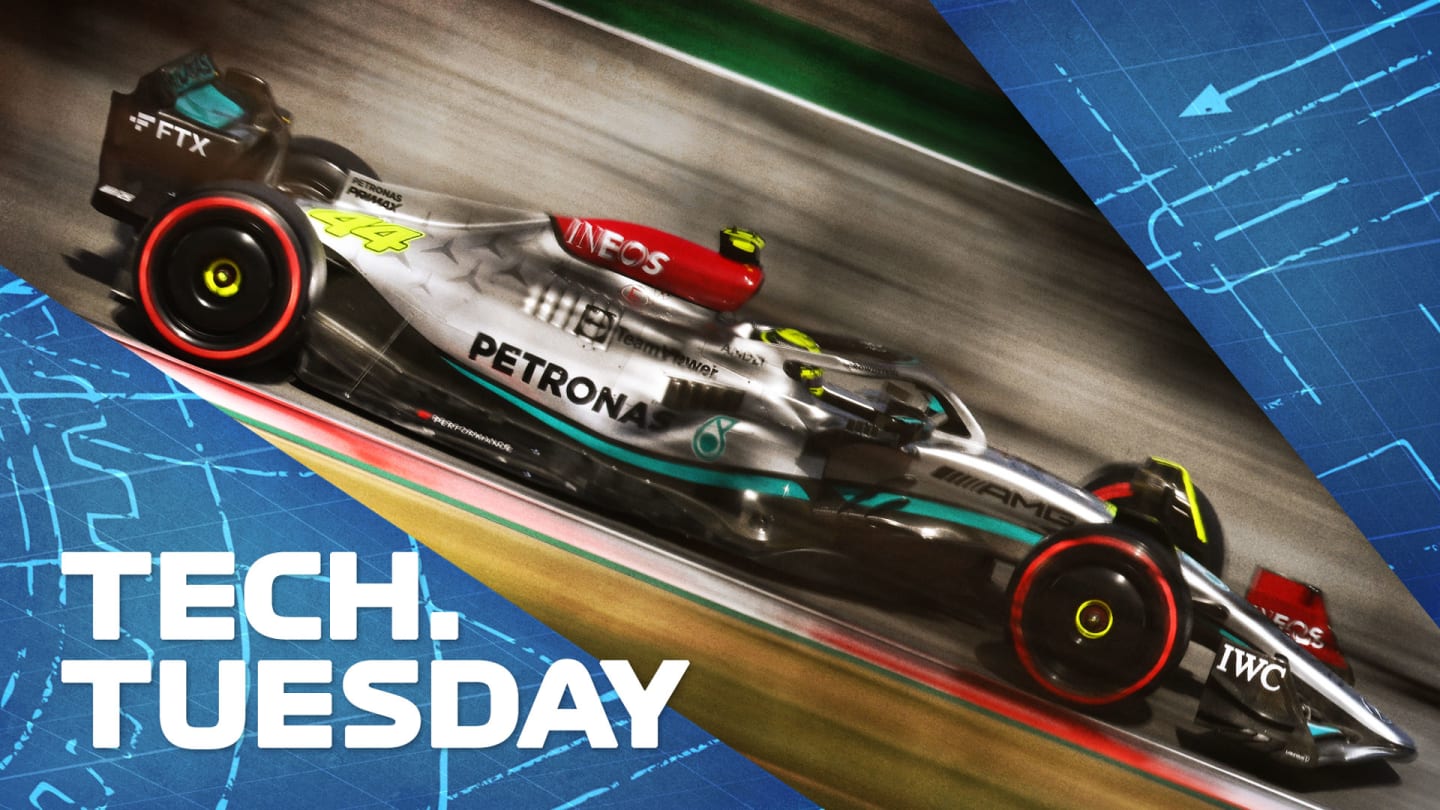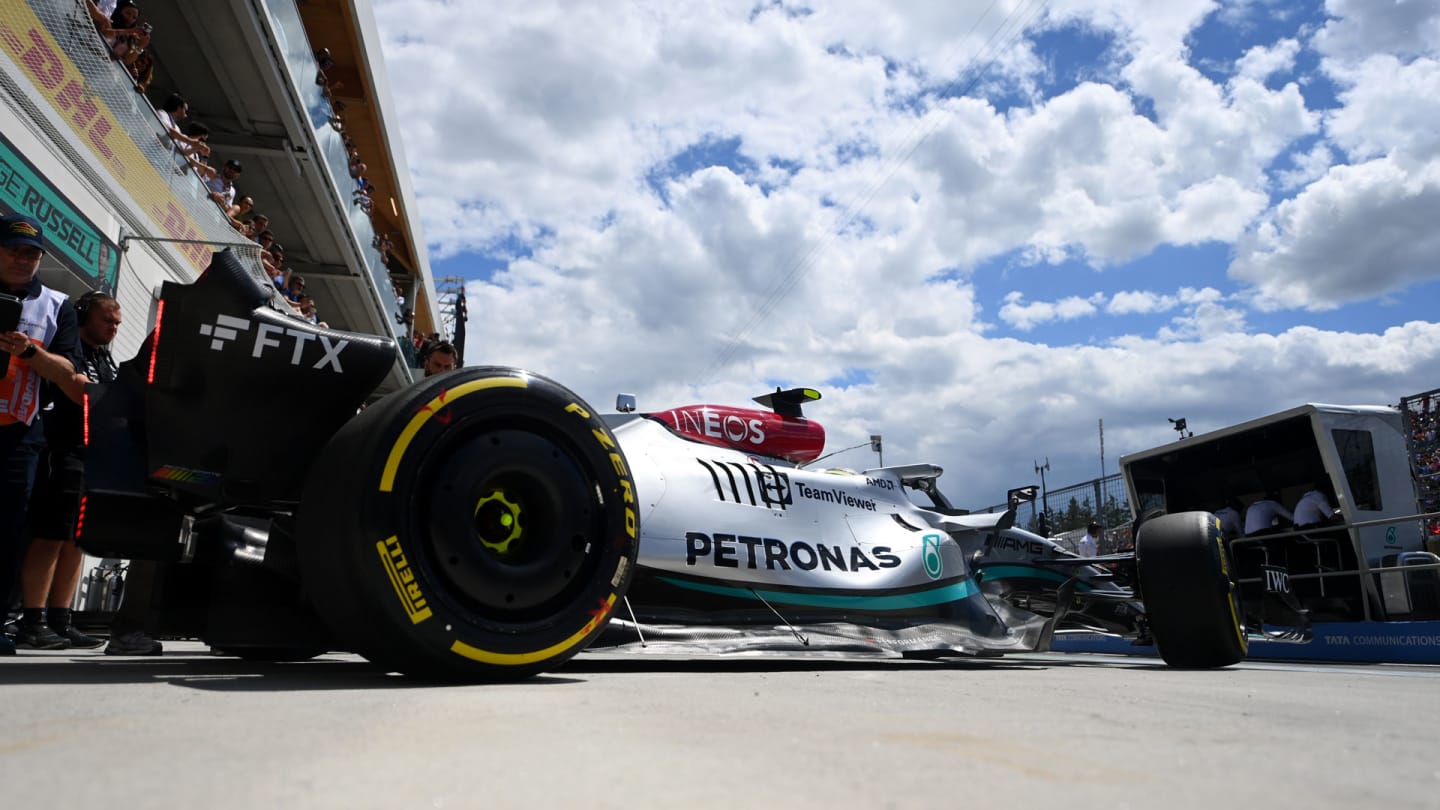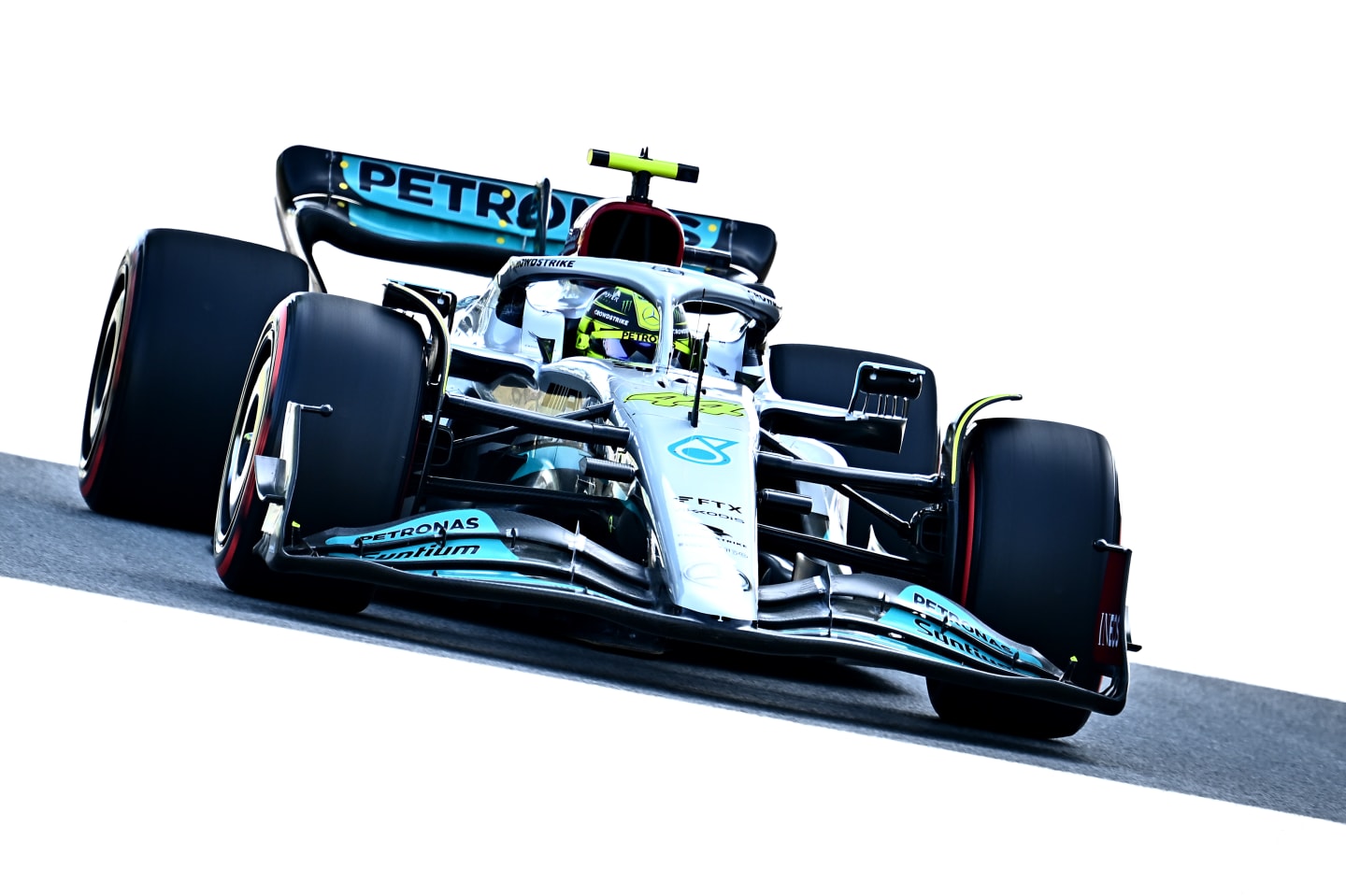
Technical
TECH TUESDAY: The problem Mercedes are attacking with their Silverstone upgrade package

Share

The Silver Arrows are set to bring a significant upgrade package to the 2022 British Grand Prix, but what problems are they looking to address – and why might their home race prove to be a crucial turning point in this campaign? Mark Hughes looks at what Mercedes are aiming to achieve this weekend.
Mercedes are hopeful that the smooth-surface and fast corners of Silverstone may give their troublesome W13 access to Barcelona levels of performance. At the Spanish race, a redesigned floor saw the car relatively untroubled by the aerodynamic porpoising it had hitherto suffered and it was quite competitive in the race, with George Russell taking a podium on merit after fighting the Red Bulls and Lewis Hamilton showing great pace as he recovered from his Lap 1 incident with Kevin Magnussen.
F1 NATION: The gang look ahead to Silverstone as Mercedes detail 'bigger, more visible' upgrade
However, since then, the next few tracks – Monaco, Baku and Montreal – have exposed a separate but connected problem – that of mechanical bouncing. This trait is an issue around the combined tyre/chassis stiffness of the car and how its rear suspension seems unable to cope. The bumpier the track, the worse the problem is.
So, the last four races have revealed a Mercedes which can be genuinely quick through smooth, fast, aerodynamically-loaded corners, but with a severely compromised bumpy track performance because of the downforce lost through running the car high enough to reduce the bouncing at higher speeds, when the car will repeatedly crash into the ground, bottoming out on its suspension at high frequency.

Mercedes' original floor with their Spanish GP changes inset, in this illustration by Giorgio Piola
It may not be coincidence that Mercedes’ years of running a lower-rake car than almost everyone else led it to develop a stiff, limited-travel rear suspension to keep the car within that limited range of rake angle.
High-rake cars needed softer, longer-travel rear suspension. The new generation of cars are lower in rake even than Mercedes used to run in order to maximise the effectiveness of the underbody venturi tunnels, but they need more suspension travel – not least because the 2022 tyres have a significantly shallower sidewall and are therefore not contributing as much to the suspension. The unsprung mass of the car – i.e. mass (such as the wheels) that is not suspended – is also significantly greater because of the bigger, heavier tyres, wheels and brakes.
Mercedes continue to attack the problem, as Technical Director Mike Elliott explained recently. “We will be bringing new bits to Silverstone; we will be trying to push the car forward, trying to get some pace from the car we’ve got as well as the new bits we are going to add to it.

Larger tyres have also led to a change of philosophy for all 10 teams this season
“I think at the same time though we have to be honest with ourselves and say that at the moment we are just a little bit behind those front-runners in Ferrari and Red Bull. And in a normal race I think it is going to be tough.
“I think Silverstone will be a circuit that suits us a little bit better, like Barcelona did, but maybe it will be just a little bit difficult. Whatever happens we will push as hard as we can.”
The smooth nature of the track may make it difficult to assess how well the new parts address the underlying problem. What we are also set to see at Silverstone is the second phase of the FIA’s technical directive – announced in Canada – regarding the monitoring of the force of the vertical oscillations of all the cars.

Mercedes will be hoping for Spanish GP-levels of performance, but Silverstone's smooth surface will make it hard to assess their upgrades' efficacy
After the data-gathering exercise in Montreal, this weekend should see the governing body’s first attempt at placing a limit on the severity of those forces, using the data from sensors already in the cars.
Rather than bring everyone up to a prescribed ride height, the FIA technical directive will instead insist that the force of the bouncing be within prescribed limits – and that the team must run whatever set-up will facilitate that. Which could conceivably mean that the smooth-riding Red Bull may continue to run at its optimum ride height while those suffering bouncing issues will have to compromise performance more than previously.
Again, Silverstone might not be the track at which we see the full implications of this ruling because of its relatively smooth surface. But in the ongoing story of Mercedes’ struggle with this car, the British Grand Prix is set to be a significant milestone.
YOU MIGHT ALSO LIKE
News Russell believes Mercedes ‘fighting for the next best’ position behind McLaren in Bahrain

Video HIGHLIGHTS: Relive the action from FP2 in Bahrain as Piastri sets the pace from Norris
News ‘We are not as far as it seems’ – Sainz reflects on process of adapting to Williams as he singles out ‘biggest change’
News Verstappen says Red Bull ‘definitely need to improve’ if they are to fight for 2025 titles



